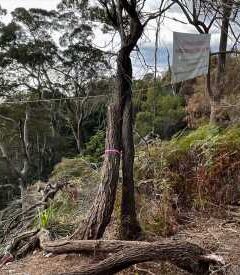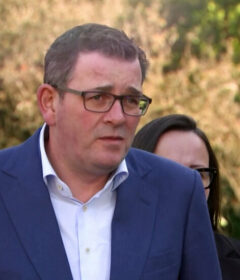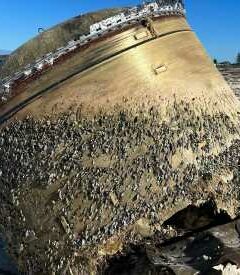Home » Australasia »
Cardinal George Pell of Australia Found Guilty of Abusing Boys in 1996
A version of this article was published in print editions on Dec. 14, 2018, but not online, to comply with a suppression order imposed by a judge in Australia, where The Times has a bureau. On Tuesday, Feb. 26, in Australia, the suppression order was rescinded after a second trial was canceled. All the dates below refer to the original December publication date.
MELBOURNE, Australia — An Australian cardinal who was once an adviser to Pope Francis has been convicted of molesting choir boys more than 20 years ago, making him the highest-ranking Roman Catholic leader ever found guilty of sexual abuse.
The unanimous jury verdict against the cardinal, George Pell, 77, was delivered Tuesday in the County Court of Victoria, where a suppression order has prevented media outlets from sharing any information about the case that could be accessed in Australia.
Cardinal Pell’s case was especially significant because he occupied the highest levels of the church hierarchy. He had been tapped by Francis to reform the Vatican’s finances after leading the church’s response to sexual abuse allegations against priests in Australia.
While Catholic bishops have been convicted before in cover-ups of child sexual abuse, this is the first time that a bishop has been convicted of perpetrating such abuse, according to Ann Barrett Doyle, co-director of Bishopaccountability.org, a research and advocacy group. More than 60 bishops have been accused of sexually abusing minors, she said.
Cardinal Pell, who returned voluntarily from the Vatican in July of 2017, was charged with five offenses said to have occurred in December of 1996 during his time as the newly appointed Archbishop of Melbourne.
Four of the charges related to an incident in which Cardinal Pell was accused of sexually assaulting two 13-year-old altar boys and forcing his penis into the mouth of one of them after Sunday Mass at St. Patrick’s Cathedral, in the priest’s sacristy; the fifth charge related to a separate incident in which Cardinal Pell was accused of grabbing one of the boy’s genitals.
Mitchell Garabedian, a lawyer in Boston who has represented hundreds of sexual abuse victims, said Cardinal Pell’s case had opened the floodgates for abuse charges of other cardinals and officials at the highest levels of the Church.
“There are no boundaries here,” Mr. Garabedian said. “Take away the robes and the religion and they are criminals.”
The guilty verdict for Cardinal Pell ends a career of ascent and enormous power for a brash leader in the church whose management skills and confidence propelled him into the Vatican elite even as accusations of molestation trailed behind him.
On Wednesday, Vatican officials announced that Cardinal Pell had been expelled from a powerful council of advisers picked by Pope Francis to guide him on matters critical to the Catholic Church’s future.
The jury trial in Melbourne lasted just short of five weeks, ending with three days of jury deliberation.
It was a retrial of the case after an earlier trial ended with a hung jury.
Both proceedings were subject to the suppression order that barred publication in Australia of details on the charges, the verdict and any other element of the case, “to prevent a real and substantial risk of prejudice to the proper administration of justice,” according to the order.
The New York Times did not initially publish this article online, and it blocked delivery to Australia of any version in print or through syndication, to comply with the order.
Another trial on charges involving abuse allegations against Cardinal Pell from the 1970s is expected to start in March, and the gag order is intended in part to prevent a future jury from developing biases before deliberations in that case. The order is scheduled to be lifted after a verdict in that trial.
But since the verdict, the news has been published by several international news outlets. News organizations in Australia have been testing the boundaries of what is permissible while pressuring the court to lift the order.
One tabloid, The Telegraph, published a front-page article on Thursday declaring “It’s the Nation’s Biggest Story” that it was not allowed to publish. “A high-profile Australian with a worldwide reputation has been convicted of an awful crime, The Telegraph wrote, adding, “but The Daily Telegraph and other Australian media are prohibited from telling you about it.”
Several other outlets published editorials on their front pages denouncing the news blackout in cryptic language that avoided direct references to Cardinal Pell or the verdict, prompting Chief Judge Peter Kidd to hold an impromptu hearing on Thursday, in which he called for prosecutors to initiate legal proceedings against journalists for contempt of court.
“A number of very important people in the media are facing, if found guilty, the prospect of imprisonment, and indeed substantial imprisonment,” Judge Kidd said, according to a transcript released by the court.
The maximum sentence for contempt, he said, is five years in prison.
Mr. Garabedian said the church benefits from court secrecy. “The suppression order plays into the secrecy, which the Catholic Church thrives on when it comes to the issue of clergy sexual abuse,” he said.
Other elements of the case have also been kept secret, in part because of privacy laws. Despite repeated requests to the court, news media outlets were refused access to the testimony from the former altar boy who is the case’s main complainant, live or in transcript.
He cannot be identified publicly under a provision in Australian law designed to protect victims of childhood sexual abuse.
During the trial, however, the prosecution’s main lawyer, Mark Gibson, read out parts of the complainant’s testimony. In that statement he described how Cardinal Pell shoved him to the floor and pushed his erect penis into his mouth.
The statement added that he did not speak out about the event for years for fear of losing his scholarship to St. Kevin’s College, a prestigious private Catholic school in Melbourne.
“I was young and I didn’t really know what had happened to me,” the statement said. “I didn’t know if it was normal.”
A second former altar boy was said by the first altar boy to have been molested by Pell. He died in 2014 in what the court described as “accidental” circumstances, widely known to have been a heroin overdose. He also cannot be identified.
Prosecutors methodically presented evidence from both complainants and built a case showing that Cardinal Pell — a physically imposing former athlete who carried nicknames like “Big George” and “the ambitious Australian bulldog” — had the opportunity and ability to commit grave acts of abuse in a relatively private section of the cathedral that he knew intimately.
His defense lawyers, led by one of Australia’s most prominent and well-paid barristers, Robert Richter, argued a man of such stature would never have been so reckless having risen that same year to become the archbishop of the Melbourne archdiocese.
Indeed, a few months before the episodes at the cathedral, which Cardinal Pell has denied, he unveiled what became known as the “Melbourne Response” to the sexual abuse problem that has plagued the church for generations.
His plan included a pamphlet with an apology and pledged modest payouts to victims of pedophile priests, capped at 50,000 Australian dollars ($36,000).
Cardinal Pell, who was then considered an efficient leader, forced more than a dozen priests who were accused of abuse to step down.
But victims of abuse also accused him of failing to adequately support their claims — the payouts were far smaller than those in other countries — and of overlooking abuse earlier in his career, when he was a priest in Ballarat, his hometown.
Mr. Richter repeatedly argued in court that none of this was relevant; it was not “a trial of the Catholic Church,” he said, according to people in court.
“The trial here is of the most senior Catholic cleric charged with actually — let’s call a spade a spade — orally raping a child of 13, and doing some other disgusting things,” Mr. Richter told the jury. He added that only “a madman,” would have done such things.
In the mistrial, which ended in September, several jurors could be seen weeping when they told the judge they could not reach a conclusion.
But on Tuesday, the jury seemed to harbor few doubts. As the foreman announced the verdict, the jury’s nine men and three women — including a mathematician, postal worker and secondary school teacher — sat straight-faced, revealing little emotion, with only a few glancing in the direction of Cardinal Pell, who gazed at the floor, his thinning gray hair swept sideways over his balding head.
Judge Kidd granted Cardinal Pell’s bail so that he could undergo a double knee reconstruction on Friday — after which, the judge said, he would issue a sentence.
Many of those who were in the court watching the proceedings said they were surprised by the outcome.
“Everyone in the room was shocked; stunned,” said Rosemary O’Grady, a retired lawyer, who took detailed notes at the trials on behalf of several victims groups. “Even people who had been anticipating one possible conviction did not anticipate five convictions.”
Julie Cameron, another supporter of the victims who diligently sat through both trials said she was overcome with emotion.
“I ended up in tears,” she said, “because it’s a miracle; it’s a miracle that that man — that boy — is now believed.”
Want more Australia coverage and discussion? Sign up for the weekly Australia Letter, start your day with your local Morning Briefing and join us in our Facebook group.
Source: Read Full Article


